- Home
- About Us
-
Art
- Artists exhibited with the '43 Group
- Events & Exhibitions
- Contact Us
Classic in thought but modenistic in treatment’ (An “Indian Express” correspondent)
Read MoreA painter completely devoid of theories, conveying a primitive poetry of Ceylon with delightful fancy’ – William Graham
Read MoreClassic in thought but modenistic in treatment’ (An “Indian Express” correspondent)
Read MoreA philosopher, anthropologist, ethnologist, but first of all an artist, who was a visionary, unique for his land and for his time’ (Weereratne, 1993, p87)
Read More“My approach to the theme [of trauma] is based on my personal and social experiences and my attempt to re-conceptualize that experience through the language of painting. My work is governed by two main events: one is my childhood memories of the civil war and the terrorism that happened in Sri Lanka in 1988-89, and since 1979 respectively, and the second is the death of the Father (my own).” – Dumith Kulasekara
“...this is, without doubt, a record of the hardship...and suffering of war, it is superseded by its being a record of resilience and adaptability. It’s a resistance to passive victimhood, if you like.” – Mark Rappolt
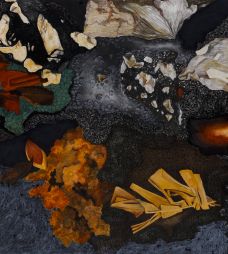
“...as O’Rourke quotes: “Can an artistic intervention truly bring about an unforeseen way of thinking…Can an absurd act provoke a transgression that makes you abandon the standard assumptions on the sources of conflict? Can those acts bring about the possibility of change? While these questions remain to be answered, Thalawatta’s practice does offer alternative ways of perceiving oneself in a post-conflict city, not through overt acts, but through nuanced gestures; by embodying experiences and remaining porous to the urban environment around him.” – Jyoti Dhar
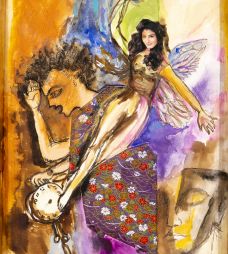
“Materials, along with their historicity and metaphors, metamorphose into Sri Lanka-based artist AnoliPerera’s exquisite works. Perera has been combining the materials surrounding her, with the situations and experiences in the social context she lives in.” – PayalKhandelwal, Colour Quotient
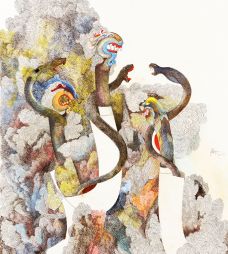
“In Pothupitiye’s work titled ‘Degree Holder’, one sees a map being transformed into an image of a man wearing a graduation robe, hat and necktie. All these symbols work in unison to mock the European system of education that was set up in Sri Lanka, and continues to this date. This imposition, in the artist’s view, created a dissonance for the locals, alienating them from their own cultural practices and indigenous wisdom.” – ChintanGirishModi
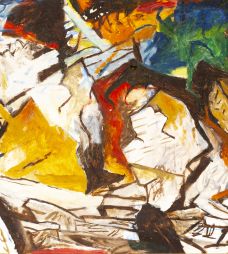
“I got bruised the other day at Weerasinghe’s studio. He was showing the paintings that constitute his latest exhibition, Decorated. One in particular struck me. Though directed to other canvases by Weerasinghe, some of them also compelling, I kept coming back to it. Take in the image: it depicts a sinister man in camouflage, a soldier, against an orange ‘background.’ Upon returning home, I couldn’t get my mind off it.” – SanjanaHattotuwa for Groundviews
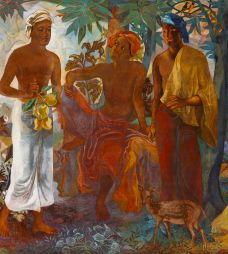
His understanding of the latest intellectual and artistic currents of the day is combined with a great feeling for his country and a special insight into his heritage and way of life. It is this duality of past and present which makes his work so unique, rendering it classical and modern, traditional yet at the same time contemporary. To see Sri Lanka through Kirinde’s eyes is to dip into a repository of fact, folklore and feeling, enriched by brilliant colour and enhanced by exquisite line.”
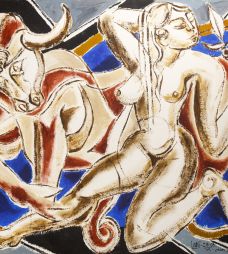
“Today’s artists are expected to restrict themselves to a single medium, a single style, a single theme. They are expected to be deadly serious about their work, to struggle with big intellectual issues and to express their own inner emotions. Laki’s reputation suffers from the fact that he enjoys his work, that his art is suffused with wit and that he seeks to give pleasure to his public. However, he deserves to be recognized as one of the most important and significant Sri Lankan artists of the post-independence period.” – C. Anjalendran in collaboration with David Robson
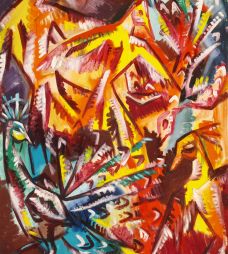
“...you enter into the virtual world of rainforests, far away from the hustle bustle of modern cities. The canvases come alive when light peeking through the thick canopy of trees seems to play hide and seek, and trumpeting elephants, chirpy macaws, hovering hummingbirds and fluttering butterflies greet you through the vibrant flora and fauna of the forests. One cannot help but get transported to the world of tranquillity and hear the myriad sounds of nature, while witnessing nature in all its glorious colours. For Senanayake’s works are a true representation of nature in its vibrancy and colours, even though the flora and fauna may have been juxtaposed from different parts of the forests, to create balance and harmony on the canvas.” – NidhiChawla
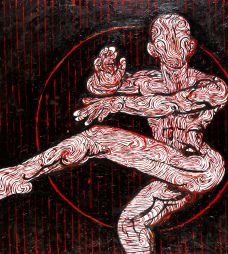
“In the late 1980s the insurgency in southern Sri Lanka, spearheaded by the Marxist-oriented political party JVP, and the counter terror campaigns by state security forces unleashed waves of violence hitherto not experiences in the country. Tens of thousands of women and men were killed or disappeared. Thousands of people, many young, were tortured. Houses and buildings were damaged and burned. These were my teenage years.” – Pradeep Chandrasiri
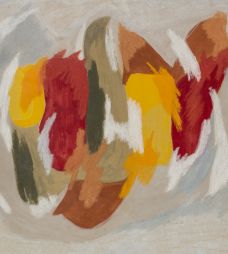
His most striking asset is a superb controlled sense of colour, on oriental understanding of harmonies and affinities, and the use of positive constructive elements.
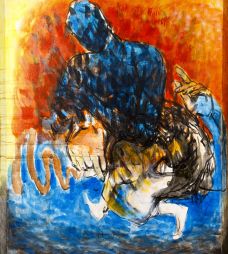
“Calamities and atrocities is a theme which can be expressed in diverse ways. Chaotic arrangement of materials in Pushpakumara’s way is, perhaps, appropriate to represent the theme graphically. The exhibition is marked for its sheer use of discarded hardware materials in installation art. However, a significant aspect of his use of material is the management of space and redefining.” – Ranga Chandraratne
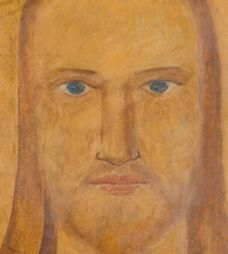
'One of the pioneers in a more vital form of painting than that based on Royal Academy standards of taste.'
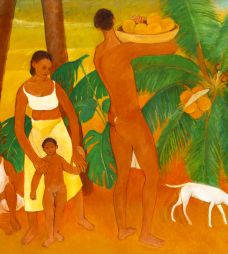
Neville sometimes left the faces blank in a painting. When asked why he did so he replied: “Because I don’t know who they are.” He didn’t paint specific people. The figures could be of any Sri Lankan but depicted so viewers could recognize certain feelings in human relationships in the context of the land to which they belong.
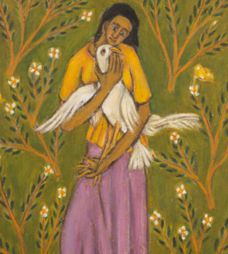
‘A painter completely devoid of theories, conveying a primitive poetry of Ceylon with delightful fancy’ – William Graham
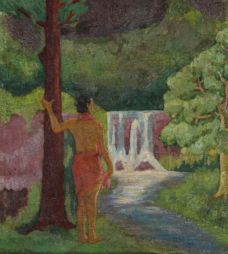
‘ A philosopher, anthropologist, ethnologist, but first of all an artist, who was a visionary, unique for his land and for his time’ (Weereratne, 1993, p87)
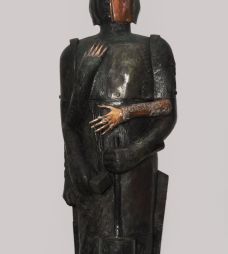
“Tissa’s work is open to numberless interpretations. It is not only Buddhist, or Asian, or religious. It is universal and timeless, and the thoughtful viewer may find all sorts of meanings in it that I have missed. Real art is not ‘art for art’s sake’, nor for moral or social improvement. It is a magic mirror in which one can see the most extraordinary things, some nice, some nasty, all vital to our understanding of what it means to be human.” - Michael Wright
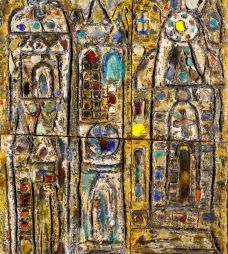
“Art imitates, sublimates, and exalts life, freeing the vision from anecdote and offering its radiant peace to all who would receive it.”
“...while studying architecture in India his style went through a slow metamorphosis into the whimsical and quaint compositions”
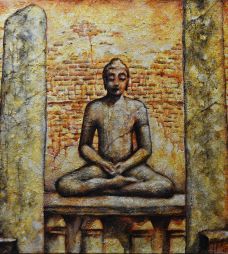
“His painting readily creates in us an immediate sense of the general. The work is about a particular subject, but the sensation is always a general one – about life, about one’s own experience. It is like reading, where we use the test to make new experiences and not only for literal interpretation. With his work, we achieve a kind of single understanding, and single meaning. We are aware as Sartre has said, that “man is universal singular.” – Prof. S.B. Dissanayake
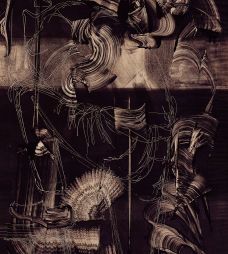
“Multiplicity of themes and technical styles is one of the salient features of his art. Some themes seem to be expressive of his personal life experiences while some signify the socio-political realities of the time. Technically he uses methods that are possible only in the computer and digital age, and in a large group of his work the geometrical approach is used meaningfully. For him, not only colour and shade but also shape seem to be of great use, and simplicity seems to be the key.” – Dr. Michael Fernando
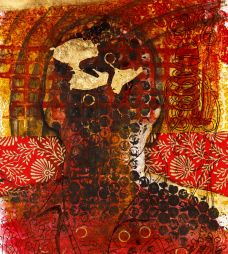
“I don’t think I am criticizing society, only observing it. I am observing how the mechanisms of the market economy are transforming age-old cultural concepts into easily saleable commodities. The Buddha is one such concept that is transformed by the market, the politics of power and capital, and at the end is deprived of style and identity.” – Bandu Manamperi
“At times art cannot be fully understood or appreciated unless an account is taken of certain fundamental artists. Gamvasi Senarath Fernando was one of them. In most of his works the three letters G.S.F. was endorsed and was familiar and known to every art lover. Beside being the chief exponent of the type of painting known as ‘picturesque’ he was responsible for removing the deeply rooted prejudice which insisted that the function of art was to represent man since by its nature art was ‘the work of man’.” – Tissa Hewavitarana
The Taprobane Collection is one of Sri Lanka's most extensive gathering of paintings and art works. It contains a carefully chosen number of the works of Sri Lanka's most celebrated artists.
Read More